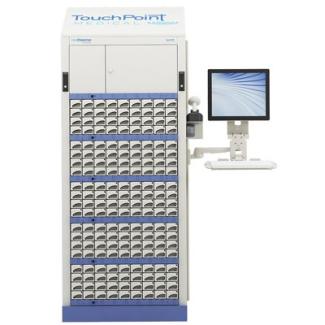Financial Analysis of Automated Drug Dispensing Cabinets (ADCs) in intensive care units
Studies show that patients admitted to Intensive Care Units (ICUs) are particularly susceptible to medication errors and adverse drug interactions. According to some estimates, the financial burden of preventable adverse drug events in a 700-bed hospital can be upwards of $2.8 million, most of which comes from the ICU. Implementing Automated Dispensing Cabinets (ADC) in an ICU can help reduce the risk of these medication errors.
ADCs in an ICU can help address the issue in many ways, including-
- Optimize floor stock management of medications
- Ensure proper safeguards are in place for each item that gets dispensed
It is important to consider the clinical and economic consequences of using an ADC in your intensive care unit.
Studies focusing on the economic impact of an automated dispensing cabinet implementation have consistently found that ADCs in ICUs have a tremendous return on investment. A Canadian study reported a reduction of $152,000 in cost of inventory alone after implementing ADCs in a mid-sized hospital. The study also noted that the cabinets reduced medication errors by more than 25%. Both findings help quantify the financial viability and impact on patient safety of automated dispensing cabinets in hospital ICUs.
Studies have also revealed that implementation of ADCs in hospital ICUs also leads to improved nursing staff satisfaction which directly translates to better patient care.
Automated dispensing cabinets can help in cost reduction by streamlining inventory management. As ADCs facilitate easy rotation of medication stocks and regular monitoring of expiration dates, the cost of expired medications can be significantly reduced. Furthermore, ADCs allow better coordination between the pharmacy and nursing staff as it relates to inventory management, leading to a reduction in net drug storage costs in the ICU.
With automated dispensing cabinets equipped with a low inventory alert messaging system and dynamic inventory management, stockouts can be significantly reduced without having to increase the workforce.
Another impact of implementing ADCs in an intensive care unit is on the workflow of the nursing and pharmacy staff. Nurses, for example, spend less time doing pharmacy-related activities, allowing them to focus more on patient care. Pharmacy technicians can also save a significant amount of time because these cabinets require them to spend less time on floor stocking activities.
Most ADCs are driven by highly customizable and secure software that can increase security and efficiency and reduce medication errors. For instance, the medDispense® System comes with a bar code scanner and biometric fingerprint scanner for an added layer of security and trackability. Efficient dispensing technology such as pick-to-light makes locating and dispensing the selected drugs easier and faster. And with five-letter drug searches becoming the standard on most ADCs by the end of the year, an extra layer of protection will be added against human error.
The financial impact of implementing an automated dispensing cabinet in an ICU comes in the form of the upfront cost of the system itself and the time spent in training the nursing and pharmacy staff. A properly implemented ADC can provide an excellent return on this investment.

Configurability is one of the biggest challenges for automated dispensing cabinet implementation in hospital ICUs. An ADC must be customized to meet the specific needs and requirements to maximize efficiency. One that is too complicated to use might hurt the compliance of nursing and other healthcare staff of a hospital.
TouchPoint Medical provides a wide range of highly customizable automated medication dispensing cabinets that can fit the needs of any hospital ICU and that are easy to implement. Some of the features that make our automated dispensing systems stand out include-
- Highly customizable drawer system
- Robust controlled substance inventory management system for ICUs
- Customizable software for improved nursing and pharmacy staff workflow
- Antimicrobial protection for an added layer of safety
Implementing technology like automated dispensing cabinets can enhance the efficiency of medication management in ICUs, leading to better patient outcomes and a reduction in the cost of care for critically ill patients. Automated dispensing cabinets can reduce medication errors and improve patient safety while helping you keep your team efficient.
TouchPoint Medicals is committed to helping healthcare institutions through innovative medication storage and management systems. If you are looking into safeguard your ICU department, contact us today for a free consultation.



